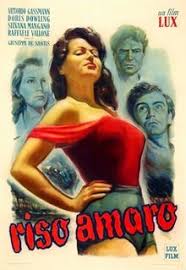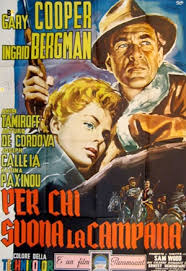1949 Milan, Italy


Sergio Lorenzi
b. 1936
Camaiore, Italy and Milan, Italy / Unknown movie with Charlie Chaplin, and “Riso Amaro” and “For Whom the Bell Tolls”
Interviewed on 20 September 2019
by Ingrid Lorenzi, Pace University
The first times films weren’t colored yet. When I started going to the cinema, they were the last times when they made films with Charlie Chaplin. They were films with a lot of laughs, and thing like that. They were in black and white, and silent. They would put the soundtrack and then there were words to read on the screen.
Then came those with color, and they were exclusively American. Italy didn’t make them yet in color. Black and white films still came to Italy, too. In those years there was “Riso Amaro” (“Bitter Rice”) with Silvana Mangano. A beautiful film. They still weren’t films in color. There was also “Per Chi Suona La Campana” (“For Whom The Bell Tolls”). I remember that time when he said, “Never ask for whom the bell tolls, it could ring also for you.”
I saw them in part at Camaiore, and in part in Milan when I was young, during those years. My mother’s relatives owned all the cinemas in Camaiore, so I often went there. And then, I moved to Milan when I was fourteen. I was already working. Most of the times I was alone. During our free days, I would go to the cinema. We had one free day per week; there wasn’t a regular day off. Before, there were ballrooms, not much. That’s why you could find some other entertainment at the cinema. Very cheap, too. At the beginning, I wouldn’t be able to take a break during the day. Then, I started to take a three-hour break, and I would have had time to go. I usually walked to the cinema, it wasn’t so far from the place I worked, and I would spend the afternoon there.
Sometimes, I would go to some cinemas where they showed two performances with only one ticket. In Milan, they had showings also in the morning. They started in the morning at 10—not all of them—but those that were modest, the luxurious ones not. But the more modest one would start at 10 and end at midnight. Cinemas were the only place to gather. In Milan, they had some cinemas where they first showed the film, and then they would have a variety show, with the same ticket. Variety shows could be songs, dance, comedy.
We also had the “Settimana Income” where they gave all the news, and then there was the advertisements. And before, “Settimana Income” was called “Film Luce” (“Lux Films”), which had all the news, like we have the tele-news today. They weren’t immediate news, but news of recent times. They showed them on a film, and after the real film started. And after a few years, the American colossal “Gone with the Wind” came.
During the war, and after, there was a lot of misery: men were away from home, the women had to tend to their families. Cinema became one of the entertainments that people could have. Before, smoking inside the cinema was allowed. Everyone—well, not everyone, I didn’t—smoked, and everyone ate peanuts, ice creams, nougats, even panini. They also sold panini, with prosciutto, mortadella, salame. During the interval, the young man with the basket would go around saying “Panini, panini, panini!” and then the man with the ice creams would come. I liked the nougats.
